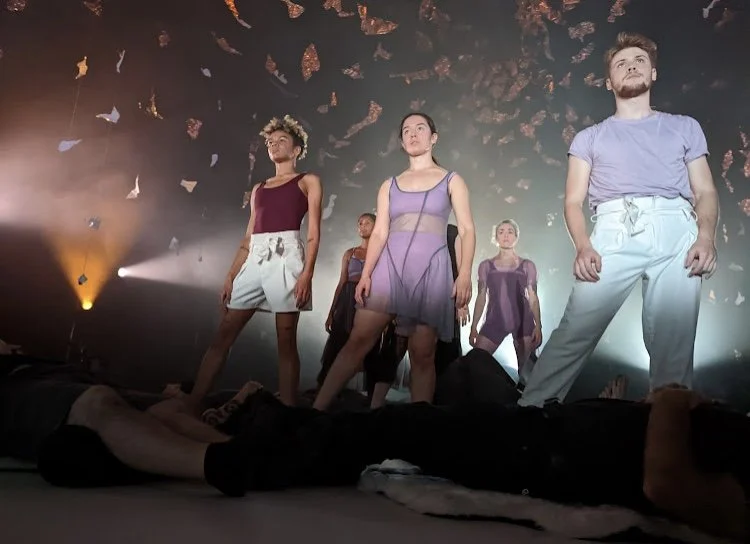zoe | juniper
the company
Our work is an intersection of embodied design, physicality, visual space, and directional sound. We approach the creation and presentation of our work with a belief that dance is a visual art form and visual art is a physical form. The reframing of these forms is the basis of all our work and can be seen in how we create a synergistic “third space” where the design, physical movement, set, and sound combine to create something unique and singular to their combination. The choreography is not fully realized without the containment and shaping of these physical elements. This is seen in A Crack in Everything (2011), where dancers performed with red string extending from their mouths, causing them to change their physicality as they try to do the choreography while attached to the taut string. This device framed, exaggerated, and thwarted the dancers’ physicality, creating a new dance that cannot exist without the specific interaction of these physical elements.
Cross-disciplinary research is another way we access this “third space.” Often we use photography and painting to locate and distill the nexus of an idea before it becomes movement. In the development of BeginAgain (2014) We created large paper casts of the dancers’ body that informed the movement and set, allowing the ephemera of choreography to linger in space as a tangible artifact. For Clear & Sweet (2016), we used video editing to manipulate the material we made in rehearsal through cutting, reverse, and slow motion, and then we brought it back to the studio to adapt it into live performance. Considering the movement as though we were seeing a sculpture, film, or painting allows us to expand the medium of classical ballet vocabulary and how it functions in performance.
While our work is not recognized as ballet, the genesis of the choreography is strongly rooted in formalized technique. The rigor and articulateness as understood through the dancer body allows us to access and express a physicality of the most raw human experiences. In BeginAgain we worked to convey a particularly nuanced expression with soloist Ariel Freedman, creating movement that deviated wildly from classical form while still honoring and engaging the technique. In nous/us (2015) we juxtaposed classical ballet timing and form with vocabulary from J-Setting, a style practiced by university dance teams. This is at the heart of what distinguishes my choreography: we use ballet in relationship to other elements and techniques, transforming it into something entirely new and expansive in its expressive capacity.
Our works are responsive to the play between each of the elements and the audience. Often zoe | juniper works exist both as a proscenium performance and installation, which allows play with duration, proximity, and shifting visual worlds in unique ways, offering multiple routes into the work. Limitations are often a major source of inspiration. In No One to Witness Study #4 (2012), space limitations led us to invite audiences to lay on the floor, erasing the separation between the art and the viewer that created a profoundly intimate experience. In this way, reconfiguring pieces for each venue keeps the work alive. Our process has evolved from recreating an exacting initial vision into nurturing creative exploration where mistakes and disruption reveal new, exciting avenues. The malleability built into the work fosters a continual play and deeper creativity, allowing me to make work in a perpetual process of becoming rather than from a fixed place and mindset. Through constant reframing and reinvention we access this liminal state that can only happen at this moment in time and space through the convergence of each element. Our art is a glimpse into this place of fleeting magic.

